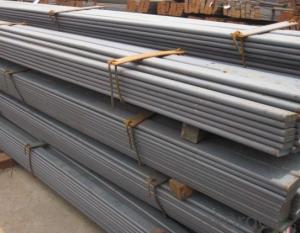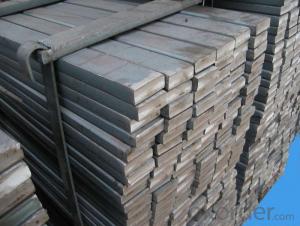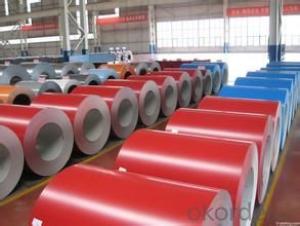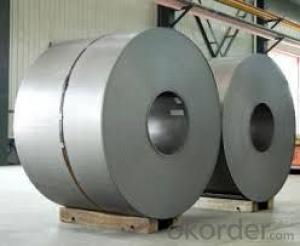Spring Steel Flat Bar ASTM Standard China Supplier
- Loading Port:
- Tianjin
- Payment Terms:
- TT OR LC
- Min Order Qty:
- 2000 PCS
- Supply Capability:
- 40000 PCS/month
OKorder Service Pledge
OKorder Financial Service
You Might Also Like
China Supplier ASTM Spring Steel Flat Bar Details
| Standard: | JIS,AISI,GB,DIN,EN,JIS, AISI, ASTM, GB ect | Dimensions: | 3mm-20mm | Grade: | 300 Series |
| Place of Origin: | China (Mainland) | Width: | 15mm-200mm | Model Number: | 321 304 304l 316 316l 321 |
| Type: | Flat | Application: | Boiler heat exchanger,machinery and hardware fields ect | Shape: | Square |
| Certification: | BV | Special Use: | Valve Steels | Material: | 304 316 317L 321 310S 430 904L ect |
| Surface: | 2B 8K HL NO.1 BA ect | Length: | 2000mm-6000mm | Quality: | Excellent and high quality control |
Packaging & Delivery
| Packaging Detail: | Standard seaworthy packing or as per your requirement |
| Delivery Detail: | About 3-5 days |
Features of China Supplier ASTM Spring Steel Flat Bar
The appearance of cold-rolled products gloss is good, beautiful;
Excellent high temperature strength;
Excellent work-hardening (after processing weakly magnetic)
Non-magnetic state solution
Specifications of China Supplier ASTM Spring Steel Flat Bar
1. Standard: GB ASTM, JIS etc
2. Grade: 304 316 317 321 430 904L ect
3. Size: 19*3 mm-140*12 mm
4. Thickness: 2mm-20mm
5. Width: 15m-200mm
6. Shape Manufactured: Flat bar
7. Length: 2m-6m or as customers' request
8. Surface finish: Black & Pickled & Bright
9. Manufacture technology: Cold drawn/cold rolled/hot rolled
China Supplier ASTM Spring Steel Flat Bar Pictures


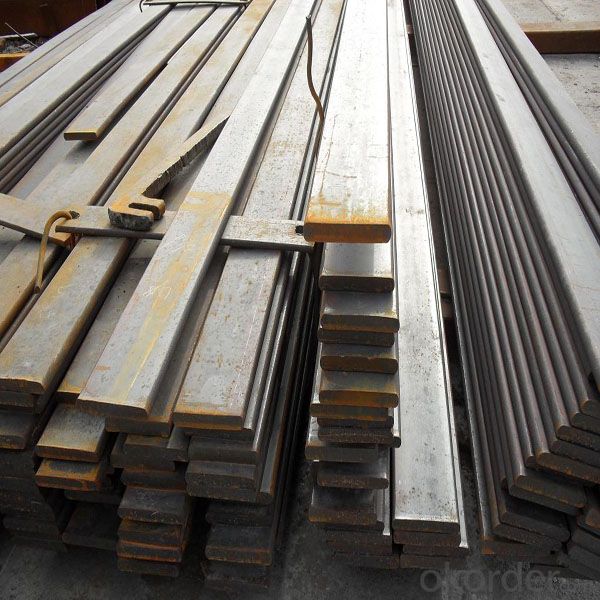
- Q:Are the steel sheets resistant to impact or denting?
- Yes, steel sheets are generally resistant to impact and denting due to their high strength and durability.
- Q:What is reinforced steel plate?
- Dimension refers to the thickness, width, length of a steel plate
- Q:Can the steel sheets be used for storage cabinets?
- Yes, steel sheets can be used for storage cabinets as they are durable, strong, and provide excellent protection for stored items.
- Q:Can steel sheets be used for manufacturing medical devices?
- Yes, steel sheets can be used for manufacturing medical devices. Steel is a strong and durable material that can withstand sterilization processes, making it suitable for various medical applications. Additionally, steel can be easily formed into different shapes, allowing for the production of intricate medical devices.
- Q:What is the difference between a smooth and perforated stainless steel sheet?
- A smooth stainless steel sheet refers to a sheet that has a uniform, flat surface without any visible texture or patterns. It is typically used for applications where a sleek and polished appearance is desired, such as in architectural designs or decorative elements. On the other hand, a perforated stainless steel sheet has small or large holes punched or drilled into it, creating a pattern of openings on the surface. These holes can be round, square, or any other shape, depending on the desired aesthetic or functional requirements. Perforated sheets are commonly used in applications where ventilation, filtration, or visibility is needed, such as in industrial equipment, acoustic panels, or safety grating. The main difference between a smooth and perforated stainless steel sheet is the presence or absence of holes in the surface. While a smooth sheet offers a clean and continuous appearance, a perforated sheet provides several benefits, including improved airflow, enhanced visibility, and increased sound absorption. Additionally, the choice between a smooth or perforated sheet depends on the specific application and the desired functionality. Smooth sheets are ideal for applications that require a sleek and seamless look, while perforated sheets are suitable for applications that demand functionality, such as filtering, screening, or allowing airflow.
- Q:Can steel sheets be used for bulletproof applications?
- Yes, steel sheets can be used for bulletproof applications. Steel is a strong and durable material that can effectively stop bullets from penetrating through it. Bulletproof steel sheets are often used in the manufacturing of armored vehicles, military equipment, and personal protective gear such as bulletproof vests and helmets. The thickness and quality of the steel sheets play a crucial role in determining their bulletproof capabilities. Steel sheets can be designed to withstand different levels of ballistic protection, ranging from handguns to high-powered rifles. Additionally, steel's affordability and ease of production make it a popular choice for bulletproof applications in various industries.
- Q:What are the different surface treatments for steel sheets?
- There are several different surface treatments available for steel sheets, each serving a specific purpose and providing unique benefits. Some of the common surface treatments for steel sheets include: 1. Hot-dip galvanizing: This process involves immersing the steel sheet in a bath of molten zinc, creating a protective layer on the surface. Hot-dip galvanizing provides excellent corrosion resistance and is commonly used in outdoor applications, such as roofing, fencing, and automotive parts. 2. Electroplating: In this process, a thin layer of metal is deposited onto the steel sheet using an electric current. Common metals used for electroplating include chromium, nickel, and zinc. Electroplating improves the appearance of the steel sheet, enhances corrosion resistance, and can provide additional properties like improved wear resistance. 3. Powder coating: Powder coating involves applying a dry powder to the steel sheet and then baking it to create a durable, smooth, and uniform finish. Powder coating provides excellent corrosion resistance, impact resistance, and can be applied in a wide range of colors and textures, making it popular for architectural, automotive, and appliance applications. 4. Painting: Applying a layer of paint to the steel sheet provides both aesthetic appeal and protection against corrosion. Different types of paints, such as epoxy, polyurethane, or acrylic, may be used depending on the desired appearance and environmental conditions. 5. Passivation: Passivation is a chemical treatment that removes impurities and contaminants from the steel surface, improving its corrosion resistance. This process is commonly used for stainless steel sheets to enhance their resistance to oxidation and staining. 6. Electropolishing: This treatment involves immersing the steel sheet in an electrolyte bath and applying an electric current to remove a thin layer of material from the surface. Electropolishing improves the surface finish of the steel sheet, making it smoother, brighter, and more resistant to corrosion. These are just a few examples of the various surface treatments available for steel sheets. The choice of treatment depends on factors such as the intended application, desired appearance, corrosion resistance requirements, and budget. Consulting with a steel sheet supplier or a surface treatment specialist can help determine the most suitable treatment for specific needs.
- Q:Can steel sheets be used for electrical motors?
- Indeed, electrical motors can utilize steel sheets. Due to its magnetic properties, steel is frequently employed in the construction of these motors. Specifically, the sheets of steel are typically utilized to form the motor's core, which is responsible for generating the essential magnetic field. With its high magnetic permeability, steel can effortlessly conduct and direct magnetic flux, rendering it an optimal material for this purpose. Moreover, steel is durable and capable of withstanding the elevated temperatures and mechanical pressures that electrical motors may encounter while in operation. Consequently, steel sheets are frequently selected as a dependable and economical choice for constructing electrical motors.
- Q:What are the common sizes of steel sheets available?
- Common sizes of steel sheets available include 4x8 feet, 4x10 feet, and 5x10 feet. Other sizes may also be available depending on the supplier and specific requirements.
- Q:Are steel sheets susceptible to rusting?
- Steel sheets can indeed be prone to rusting. The composition of steel mainly consists of iron, a metal that has a natural tendency to react with oxygen when in contact with moisture, resulting in the formation of iron oxide, commonly referred to as rust. Consequently, when steel sheets come into contact with water or moisture, rusting can occur gradually. Nevertheless, there exist techniques to hinder or decelerate the rusting process, including the application of protective coatings or the utilization of stainless steel. The latter contains elements like chromium that offer supplementary protection against corrosion.
1. Manufacturer Overview |
|
|---|---|
| Location | |
| Year Established | |
| Annual Output Value | |
| Main Markets | |
| Company Certifications | |
2. Manufacturer Certificates |
|
|---|---|
| a) Certification Name | |
| Range | |
| Reference | |
| Validity Period | |
3. Manufacturer Capability |
|
|---|---|
| a)Trade Capacity | |
| Nearest Port | |
| Export Percentage | |
| No.of Employees in Trade Department | |
| Language Spoken: | |
| b)Factory Information | |
| Factory Size: | |
| No. of Production Lines | |
| Contract Manufacturing | |
| Product Price Range | |
Send your message to us
Spring Steel Flat Bar ASTM Standard China Supplier
- Loading Port:
- Tianjin
- Payment Terms:
- TT OR LC
- Min Order Qty:
- 2000 PCS
- Supply Capability:
- 40000 PCS/month
OKorder Service Pledge
OKorder Financial Service
Similar products
New products
Hot products
Hot Searches
Related keywords

